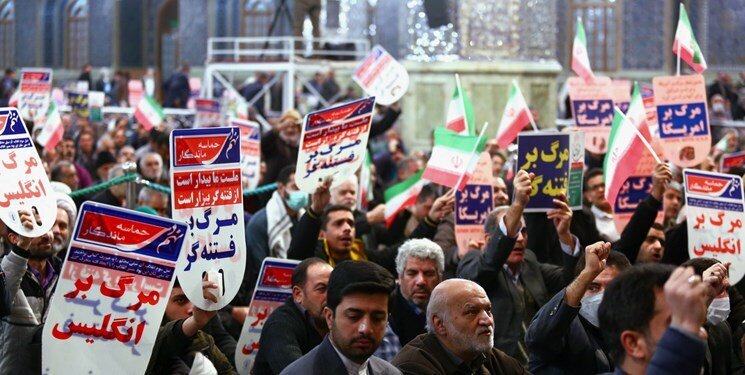Dey 9: the day Iranians ended foreign-instigated ‘sedition’

TEHRAN – Dey 9 falls on December 29 this year, marking the end of the 2009 post-presidential election unrest in Iran.
On this day, Iranians from all walks of life gather in Tehran and other cities across the country to demonstrate their support for the Islamic Republic and reject foreign interference in Iran's internal affairs.
“The 9th of Dey was a day when our dear people displayed such greatness that it astonished the world,” remarked Ayatollah Seyyed Ali Khamenei, the Leader of the Islamic Revolution.
He continued: “The most powerful governments in the world, even with their best efforts, cannot bring a hundred thousand people to the streets of their cities in just two days. For tens of millions to come out across a country, even under government orders, would signify an exceptionally strong government.”
The origins of Dey 9
The events leading to Dey 9 began after Iran’s election headquarters declared Mahmoud Ahmadinejad the winner of the 2009 presidential election. The two main opposition candidates, Mir-Hossein Mousavi and Mehdi Karroubi, rejected the results, alleging electoral fraud. They called on their supporters to protest, sparking months of unrest.
While the Iranian constitution allows peaceful and authorized protests, Western-based Persian-language media amplified doubts about the election results, fueling riots. Foreign operatives were reportedly sent into Iran to destabilize the country. Despite the escalating unrest, Mousavi and Karroubi refused to dissuade their supporters, prompting Ayatollah Khamenei to label the events as "sedition."
Dey 9 is considered an "epic" due to the sheer scale of pro-Islamic Republic rallies held that day, which overshadowed the earlier protests and effectively brought an end to the unrest.
Investigations revealed that claims of election fraud and the subsequent riots had been premeditated. As protests continued, some foreign-backed rioters escalated the situation by damaging public and private property and attacking religious values.
On Ashura Day, a significant occasion marking the martyrdom of Imam Hussein (AS), the third Shia Imam and grandson of the Prophet Muhammad (PBUH), some demonstrators insulted religious symbols, deeply offending the Iranian people.
Ashura holds profound significance for Iranians and played a crucial role in rallying public support for the Islamic Republic, both during the Islamic Revolution and the events of 2009. Ayatollah Khamenei highlighted this connection, saying: “Just as during the Revolution, Muharram aided the people, and Imam Khomeini said that blood triumphs over the sword, Ashura also played a pivotal role in creating the enduring epic of Dey 9.”
After Dey 9
The unrest subsided following the massive rallies on Dey 9. Mousavi and Karroubi were placed under house arrest on charges of inciting public unrest and threatening national security.
“There are few nations in the world that trust their government as much as Iranians trust the Islamic Republic,” Ayatollah Khamenei said, praising the Iranian people’s unwavering commitment to the values of the Islamic Revolution.
Dey 9 serves as a reminder to Iran’s adversaries that the Iranian people stand firmly with their government against foreign plots and pressures.
Security is a cornerstone of Iran’s development and the well-being of its citizens. With strong public support, the Islamic Republic has built robust intelligence and security systems to neutralize threats before they materialize.
Despite being situated in a volatile region, Iran is among the most stable countries in the world. It has even assisted neighboring nations in safeguarding their security and national interests against foreign interference.
The Iranian people deeply value this stability, attributing it to the efforts of the Islamic Republic. Today, Iran remains a symbol of resilience and strength in a challenging geopolitical environment.
